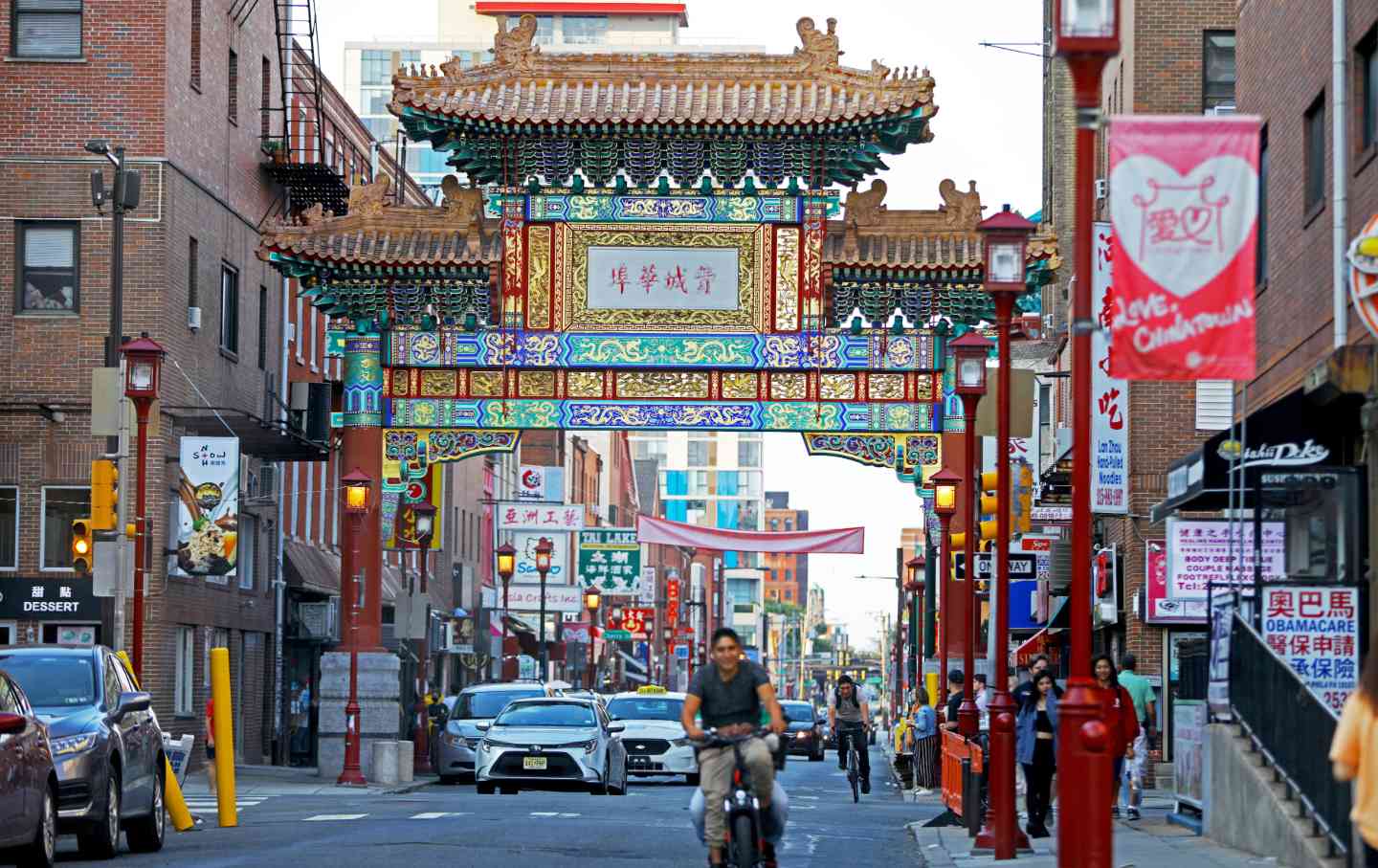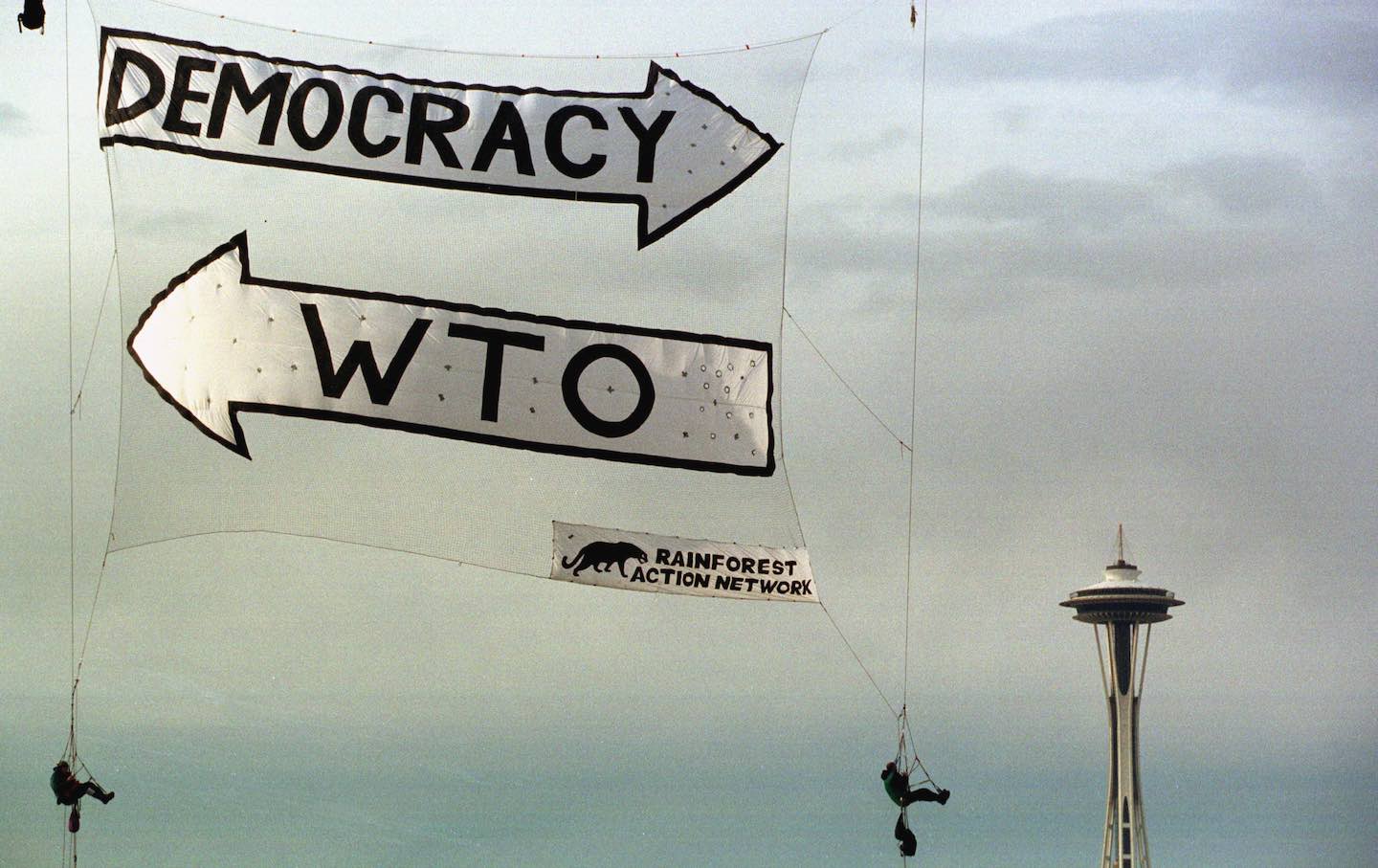Surfers Are Fighting to Save the Waves—and the Planet
By the end of the century, the world could lose almost half of its sandy beaches. But a movement of surfers across Latin America is working to protect the coastal-marine environment.

A surfer riding a wave in Peru.
(Goyo Barragán / HAZla Por tu Ola campaign)On any given day from the cliffside esplanade of Lima, Peru, passersby can look out to find people dipping in and out of the Pacific Ocean’s clear blue waters. Visited by over 20,000 surfers annually, Lima is home to several of the 43 waves that receive protection in Peru under national law. Following decades of grassroots advocacy efforts led by surfers and environmentalists, the first-of-its-kind “Law of the Breakers” went into effect in 2014, recognizing surf breaks as objects of state property and giving them the right to protection from harmful commercial and industrial development.
Although a variety of indirect legal mechanisms for conserving waves have been identified globally, Peru is one of the only countries with a law dedicated to protecting surf breaks. Amid mounting threats to coastal access—from beachfront privatization and coastal infrastructure projects to the accelerating climate crisis—surfers and community activists inspired by the progress in Peru are joining forces with environmental lawyers to replicate these protections across Latin America. In Chile and Panama, policymakers have put forward surf break bills in Congress, and advocates in Ecuador are gathering signatures from the public to catalyze legislative action in the National Assembly.
If successful, the movement could not only help conserve the coasts through innovative uses of the law, but help solidify a powerful new coalition of environmental protectors.
Between increased sea surface temperatures, rising sea levels, and intensified El Niño cycles, climate change is already altering many of the background conditions that lead to wave formation. Researchers at Stanford found that by 2100, sea-level rise due to global warming could adversely affect or eliminate 32 percent of surf spots in California. By the end of the century the world could lose almost half of its sandy beaches. Moreover, intensified storms and increasing extreme weather events are impacting coastal access, forcing short-term evacuations and even raising prospects of permanent relocation.
While treating a wave as a legal entity may seem odd, the move comes amid a growing acceptance of nature and planet Earth as subjects of the law, entitled to certain fundamental rights. In the last decade, this understanding—long acknowledged in Indigenous cultures—has entered into national legal systems across Latin America. In 2008, Ecuador became the first country to include rights of nature in its constitution. A few years later, Bolivia passed a law recognizing nature’s right to exist and thrive, with Panama enacting a similar law in 2022. Individual rivers have also been granted the status of legal persons in New Zealand, India, and most recently, Peru.
Under the Peruvian Law of the Breakers, surf breaks are treated as legal objects. Notably, the law is aimed only at protecting surf breaks specifically deemed apt for surf sports—meaning they possess a certain level of surfable quality.
According to Ed Atkin, codirector of eCoast Marine Consulting and Research, such high-quality breaks are rare; indeed, surf breaks designated as of “national significance” in Aotorea New Zealand—which set an important legal precedent—occupy approximately 0.0003 percent of the region’s coastline by Atkin’s estimate.
As inalienable property of the state, Peruvian surf breaks are protected from privatization and—due to another clause in the law—effectively have a right to preservation against development that could adversely affect their continued existence and well-being. For a surf break to receive such protection, a technical file documenting its existence must be prepared, and followed by the break’s incorporation into a national registry. Today, the “HAZla por tu Ola” or “DO IT for your Wave” campaign has achieved a protected status for nearly one-third of 144 surf breaks it identified.
Carolina Butrich, the campaign’s coordinator, a national windsurfing champion, and the manager of the Conservamos por Naturaleza or “We Conserve for Nature” initiative, said that the campaign has united diverse stakeholders from the public and private sectors. “I think coalition building is our secret sauce, honestly, and the need arises, whenever you’re trying to do something big in a community,” said Nik Strong-Cvetic, CEO of the Save the Waves Coalition.
For Butrich, the focus is now on “safeguarding 100 surf breaks by 2030 in Peru, while also serving as a beacon of inspiration and support for other nations in their efforts to protect these invaluable coastal ecosystems.”
Panamanian advocates, for instance, have proposed a law that would both protect surf breaks and establish the world’s first-ever Wave Sanctuaries—environmentally protected areas designated by the quality and consistency of waves; cultural and economic value from surfing; and the presence of healthy marine ecosystems. The process behind this proposal involved close coordination between community members and a Panamanian Assembly Member, echoing what Strong-Cvetich called the most important takeaway from the model in Peru: “The design of [the Peruvian] process was intentionally bottom up. Community driven conservation is the most durable.”
Challenging stereotypes of surfing as a purely recreational and self-interested activity remains a big challenge for surf break protection advocates, who seek to illuminate the social, economic, and ecological benefits of saving the waves. From the South American coastline to the US West Coast to New South Wales in Australia, surfing is a clear form of cultural heritage and a direct way to connect with the natural world.
Popular
“swipe left below to view more authors”Swipe →“Surfing waves for many people is a religion, a spiritual activity, where they find a deep connection with themselves and the environment that surrounds them,” said Manuela Paz Barros Dorfer, a lawyer and founder of Landskap, a Chilean consulting company focused on sustainable landscaping. Barros Dorfer rejected stereotypes of surfers as arrogant and emphasized the overlap of surfers’ interests with those of environmentalists and the broader public. “We all benefit from the sea,” she said.
Surf break conservation can also be a legal proxy for enacting a range of environmental protections against commercial development and industrial activity in sectors like mining, oil and gas, and large-scale fishing. These protections ensure the continued existence of major waves as well as their surrounding waters and coastlines.
Barros Dorfer cited the convergence of protections for waves with those for the surrounding wetland and sand dunes. The marine-coastal biodiversity in the Piedra del Viento coastal marine sanctuary near Topocalma, Chile, for example, protects traditional artisanal fishing and seaweed harvesting.
Surf breaks often overlap significantly with marine habitats and carbon-sequestering benthic ecosystems. A study from Save the Waves found that roughly 90 percent of the world’s top surf sites are located in marine biodiversity hotspots, home to endemic species at serious risk of destruction.
In Latin America, surfing and surf tourism can have immense economic value, and protecting surf breaks can further provide a means for safeguarding and growing local coastal economies. For this reason, the Save the Waves Coalition supports studies of “surfonomics.” A 2014 report by the Coalition found that surf tourism generated between $1.6 and $6.4 million annually for the surrounding city of Pichilemu. More recently, the 2023 Pan American Surfing Games in Panama alone generated about $2 million in national economic revenue.
Part of the work done by surf break protection advocates is communicating this value to policymakers and the public, which is not always intuitive or natural for non-surfers to grasp. “Surfers are typically better suited than almost anyone else to notice the changes that are precipitated by climate change,” said Jesse Reiblich, an assistant professor at the University of Rhode Island who coauthored a global review of legal protection mechanisms for managing surf breaks last year.
Whether surf break protection laws can provide a successful model for more countries within and beyond Latin America remains to be seen, but the surfers and environmental lawyers behind them represent an increasingly well-organized and vocal coalition in the region. As they transcend traditional divides between local constituencies, they are opening new doors for the future of environmental advocacy in a warming world. “The enjoyment of the sea…comes from the heart of our culture,” said Barros Dorfer. “And those who enjoy it have a great responsibility to protect it.”
This article was informed by the author’s research as a US Fulbright Student Program grantee, which was conducted in affiliation with the Peruvian Society for Environmental Law.
More from The Nation

Yale Students Voted to Divest, but What’s Next is Unclear Yale Students Voted to Divest, but What’s Next is Unclear
The referendum calls on the school to divest its $41 billion endowment from military weapons manufacturing firms, yet the power to do so is in the hands of the board of trustees.

The “Save Chinatown” Coalition Goes on the Defensive in Philadelphia The “Save Chinatown” Coalition Goes on the Defensive in Philadelphia
The construction of a new basketball arena threatens to fill the neighborhood with more traffic and raise rents.

Human Rights for Everyone Human Rights for Everyone
December 10 is Human Rights Day, commemorating the anniversary of the Universal Declaration of Human Rights (UDHR), one of the world's most groundbreaking global pledges.

25 Years Ago, the Battle of Seattle Showed Us What Democracy Looks Like 25 Years Ago, the Battle of Seattle Showed Us What Democracy Looks Like
The protests against the WTO Conference in 1999 were short-lived. But their legacy has reverberated through American political life ever since.

Hollywood’s Vocal Actors Union Goes Silent on a Gaza Ceasefire Hollywood’s Vocal Actors Union Goes Silent on a Gaza Ceasefire
Amin El Gamal, head of SAG-AFTRA's committee on Middle Eastern and North African members, has advocated for a statement supporting a ceasefire in Gaza—so far without success

The Mirabal Sisters The Mirabal Sisters
Patria, Minerva, and María Teresa Mirabal were sisters from the Dominican Republic who opposed the dictatorship of Rafael Trujillo; they were assassinated on November 25, 1960, und...


